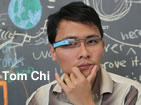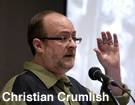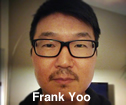It may be true that a jack-of-all-trades is a master of none, but for a UX professional, extra skills can boost a career.
When I was a hiring manager at Apple, Amazon.com, and Yahoo!, I found the most compelling candidates to be those with a mix of skills. They tended to contribute out-of-the-box ideas, communicate well across functional groups, and fill more than one role during implementation. When I followed some of them through their subsequent careers, I noticed that they tended to take unconventional but very successful paths.
Common Skill Combinations
Throughout my career, I’ve met UX professionals who have mastered multiple skills. This diagram reflects my cumulative impression of the skill combinations that a UX professional is most likely to have. Skills in the same bubble (such as user research and accessibility) tend to go together most often; those connected by a direct line somewhat less.
In the center of the diagram is product leadership. Some companies use that term to describe the skill set that qualifies a person to cross-functionally manage the design and development of a product. Experienced product managers usually fill such roles. But when an available manager in engineering or design has more product development experience than anyone else on the team, a pragmatic executive will often choose that manager to lead the project.

Successful People with Multiple Skills
The case studies in this article focus on the role that multiple skills played in the achievements of six of my former Yahoo! colleagues. My motivation for sharing their stories is to inspire others to expand their career options by acquiring and applying multiple skills.
Matte Scheinker

When I first met Matte, he led the Messenger User Experience Design (UED) team at Yahoo!. He is now chief product officer at YouSendIt, a private company in the digital file delivery space. In a recent interview, Matte talked about his evolution from psychology major to product management executive:
“My first job in the industry came when the small membership association I was working for needed someone to maintain their website. I leveraged my writing skills to get the assignment. I then used my dormant coding skills to get up to speed on HTML, JavaScript, and CSS. While building the website, I discovered a love for the user experience part of the process. I merged my academic training in psychology with coding to convince a startup to hire me as an interaction designer.
It was at the startup where I learned the basics of interaction design from some amazingly talented and generous people. When that startup needed to do user research, I was able to bring my skills from working in a research lab in college and helped run hundreds of tests.
When the dot-com bubble burst, I got my dream job at Yahoo! where many more brilliant and kind people gave me a master class in interaction design and taught me the basics of visual design. I jumped at the opportunity to take a leadership role and quickly realized that my business skills weren’t good enough to effectively communicate with my business partners. Again, I relied on the generosity and patience of my colleagues who walked me through spreadsheet after spreadsheet until I began to understand.
Gaining all of those skills was just what I needed to get my next job: helping to instill design thinking across diverse functions at AOL. I led a team that set hiring standards for product management and design, set product standards, conducted product reviews, and created user-focused educational opportunities. Members of my team acted as PM/designer/developer on a number of high-profile projects.
My current role as the chief product officer of YouSendIt requires the totality of the skills I’ve gained throughout the years. In interacting with colleagues across the organization, I play the role of Babelfish, giving me the opportunity to insert design and user-focused thinking into every conversation. Ten years ago, people with my background weren’t considered for roles like this. Now I’m one of many people flexing user experience muscles to shape the way their companies envision and build products.”
Irene Au
 After two years as an interaction designer at Netscape, Irene Au joined Yahoo! in 1998. As manager of user interface design and user research, she introduced usability testing, field research, and proactive design methods to the company. She moved up to director before becoming Yahoo!’s first vice president of UED. Later, she led a UED-like group at Google.
After two years as an interaction designer at Netscape, Irene Au joined Yahoo! in 1998. As manager of user interface design and user research, she introduced usability testing, field research, and proactive design methods to the company. She moved up to director before becoming Yahoo!’s first vice president of UED. Later, she led a UED-like group at Google.
Irene is now in charge of product and UX at Udacity, a startup in the higher education space. She also teaches yoga. She told me how several of her skills have boosted her career:
“My technical background (B.S. in Electrical and Computer Engineering) gave me credibility with my engineering colleagues and enabled me to come up with practical design solutions that could be built.
My training in interaction design (Master’s degree in Human-Computer Interaction) taught me problem solving skills for design.
My experience in conducting user research helped me better understand the users I was designing for and be a more effective designer for their needs.
Soft skills such as collaboration, negotiation, persuasion, and facilitation helped me get desired outcomes in a positive, healthy way that makes everyone feel involved and good about decisions. Being a good designer requires you to be versatile enough to understand what the overall strategic goals are, the technical underpinnings of the product, and what users need. Being able to have all perspectives requires patience, practice, and empathy acquired through listening and curiosity.”
Tom Chi
 When Yahoo! hired Tom Chi in 2005, he was best known for OK/Cancel, the satirical UX comic strip that he and Kevin Cheng created. But Yahoo! hired him for the breadth of his skills. As of this writing, Tom’s LinkedIn page lists fifteen fairly distinct skills.
When Yahoo! hired Tom Chi in 2005, he was best known for OK/Cancel, the satirical UX comic strip that he and Kevin Cheng created. But Yahoo! hired him for the breadth of his skills. As of this writing, Tom’s LinkedIn page lists fifteen fairly distinct skills.
Tom walked me through his career journey. After gaining an academic foundation in astrophysics, he earned a Masters degree in the more practical field of electrical engineering. He needed software to test his hardware so he learned to program. That led to a software-consulting role at Trilogy. There he picked up project planning skills that landed him a program management position at Microsoft.
In his five years at Yahoo!, Tom grew from a multi-talented designer to a senior director of product and user experience. At Google, he built an advanced development team. Recently, he founded a non-profit to advise social entrepreneurs.
Tom shared how he applies his non-UX skills to UX-related work:
“Astrophysics gets you to quickly assess unknowns and find a path to make them known. Because you work over so many orders of magnitude, it builds a sense of perspective. In business, perspective of relative scale helps you decide which issues are worth arguing about.
Electrical engineering helped me learn interaction design. Electrical engineering is largely concerned with signals and their amplitude, frequency, and noise. I transferred my understanding of signals to my work in design. The frequency of use of a feature meant it required quicker access. The size of an item was a kind of amplitude. Anything that reduced the clarity of the user’s intention was like noise. I was able to map a good deal of signal processing to interaction design and quickly get up to speed.
In product management, you learn how parts interact, how ideas lead to outcomes, and how to specify, schedule, and resource a project. Product management taught me to step back and look at a project or design strategically, plan what conversations to have, and effectively communicate what needs to get done.”
Luke Wroblewski
 Luke Wroblewski is a well-known UX author and speaker. The list of specialties on his LinkedIn page includes product strategy, information architecture, and usability, as well as visual, information, and interaction design for web and mobile products. He founded a social product list sharing company and sold it to Twitter when it was barely in beta.
Luke Wroblewski is a well-known UX author and speaker. The list of specialties on his LinkedIn page includes product strategy, information architecture, and usability, as well as visual, information, and interaction design for web and mobile products. He founded a social product list sharing company and sold it to Twitter when it was barely in beta.
Luke told me about four high-level skills that he applies in every role:
- Pattern recognition. People make sense of what they see by recognizing the similarities and differences between visual elements. Through the process of visual organization, designers manipulate these visual relationships to create meaning. This requires an intimate awareness of visual patterns and the ability to manipulate those patterns to tell a structured story.
- Storytelling. The design of products requires effective communication with an audience. Each product’s interface needs to ‘tell’ people what it offers them and why they should care. This requires the ability to explain and persuade not only with logic, but with emotion. In other words, it requires storytelling.
- Visual communication. In order to effectively communicate meaningful stories, designers need to manage the prioritization and relationship of visual elements. Exposing these relationships through visual communication enables people to easily interpret complex information and its implications.
- Empathy. Design methodology focuses on the perspective of customers and end users when analyzing and crafting solutions.
Christian Crumlish
 Yahoo! hired Christian Crumlish in 2007 to curate its internal and public pattern libraries. His experience as a book author who had written about web design and information architecture made him a prime candidate for the role. Later, at AOL, Christian acquired product leadership skills. He is currently director of product management at CloudOn, a startup that enables tablet users to access standard productivity applications.
Yahoo! hired Christian Crumlish in 2007 to curate its internal and public pattern libraries. His experience as a book author who had written about web design and information architecture made him a prime candidate for the role. Later, at AOL, Christian acquired product leadership skills. He is currently director of product management at CloudOn, a startup that enables tablet users to access standard productivity applications.
Christian’s UX-related skills include information architecture, interaction design, product leadership, and “voice” (copy, language, nomenclature, etc.). Like Luke, he cited storytelling and visual communication as key high-level skills.
Here is a list of some of his skills and ways in which he acquired them:
- Storytelling and verbal communication: Practice in grade school and college.
- Sketching: Years of experimenting as a child.
- Detecting miscommunication: Working as a messenger at a printing company.
- Information architecture: Independent exploration.
- Interaction design: On-the-job experience as an extension from IA.
- Product leadership: Projects undertaken while on the consumer experience team at AOL.
- Prototyping: Hands-on experience throughout his career.
Frank Yoo
 Frank Yoo began his career as an art director at the University of Michigan, eventually transitioning into UX-oriented roles at diverse companies. During his five years working at Yahoo!, he served as UX design lead on several high-traffic sites. Next, he spent some time working in a mobile design lead role at LinkedIn, after which he became product lead for the ride-sharing startup Zimride/Lyft.
Frank Yoo began his career as an art director at the University of Michigan, eventually transitioning into UX-oriented roles at diverse companies. During his five years working at Yahoo!, he served as UX design lead on several high-traffic sites. Next, he spent some time working in a mobile design lead role at LinkedIn, after which he became product lead for the ride-sharing startup Zimride/Lyft.
In addition to presentation and written communication skills, Frank highlighted the benefits of mastering design tools:
“Having greater control of your creative facility not only saves time when tight deadlines loom, it enables free expression of your ideas across multiple skill disciplines, as well as a pure application of your problem solving skills as a designer. It’s like the relationship between musicians and their instruments.”
Frank explained the path that he took from design lead to product lead:
“When armed with good data and clear product goals, I found it easier to create more focused and powerful user experiences. When I arrived at Zimride, I asked to take on the product manager role (while maintaining design lead duties) for the mobile team, and I was granted that opportunity. I think my design background gives me valuable perspective on product development because I’ve been conditioned to be an advocate of the user. As a product manager, I still have the opportunity to exercise my creativity and build great experiences, just in a more holistic way. In my current role, this boils down to managing priorities, keeping product goals aligned with company goals, and shepherding overall product execution.”
What Does This Mean for Your Career?
Did reading these stories get you thinking about how additional skills might boost your own career? If so, consider approaching career planning as a design exercise. Where do you want to be in five years? What skills could help you get there? Which do you already have? Which do you need to acquire?
Sketch out several scenarios on your own or with a friend or mentor. Weigh the pros and cons of each scenario. Pick one that suits you. After choosing, remain open-minded because unanticipated opportunities may arise, as they did for our storytellers.
Here are some ways a person with a full-time job can acquire additional skills:
- Take courses offered by your employer or a professional association.
- Learn an analytical subject like computer science or statistics tuition-free through an online university. You can learn at your own pace at Khan Academy or Udacity, or enroll in a scheduled course at EdX or Coursera.
- Take graphic arts classes offered in your community.
- Maintain a website for a non-profit or manage a redesign of their site.
- Back at the office, work closely with someone who has a skill you want to learn and who wants to learn a skill from you.
No matter how you decide to become a multi-skilled UX professional, doing so could enrich your career in both expected and unexpected ways. And consider this bonus benefit: when you bring your UX sensibilities to other roles, you may be in a better position to make products more user-centric. Isn’t that why you entered the UX profession in the first place?
